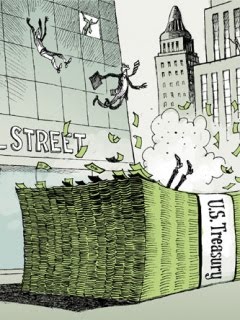This strategy involves selecting stocks that are out of favour of the market but are fundamentally sound. That is, strong businesses, which have low risk of going under, that no one wants to buy due to widespread pessimism. These strategies exploit investors’ psychology, which they are prone to overreact to good and bad events. This is caused by limited attention to the whole situation of the event, herd behaviour, overconfidence, over-pessimism and noisy information. This in turn causes companies to be out of favour and undervalued by the market, which is shown through price to earnings (P/E), price to book value (P/BV), price to cash flow (P/CF) and dividend yield. Some parts overlaps Value Investing, which I will cover later on, because contrarian investors look at below market averages for the first three and above market averages for the latter.
The strategy I use is based on Dreman (1998):
The strategy I use is based on Dreman (1998):
Buying
Mandatory:
- Lowest possible P/E, P/BV and P/CF for a stock, while using the P/E as a core ratio. These ratios have to be below market value for the industry or index. The companies have to lie within the two lowest quintiles (lowest 40% of companies based on the ratios mentioned).
- Dividend yield should be highest possible, which has to be above market yield. Companies have to lie within two highest quintiles.
- Dividend yield which is above average which the company can sustain and increase. Dividend cover of 2 or more is desirable. The value must be more than 1.5.
- Current assets should be twice the amount of current liabilities is desirable, that is current ratio of 2:1. This value varies from industry to industry. Minimum ratio is 1:1.
- Many favourable financial ratios as possible such as high return on capital employed (ROCE), return on assets (ROA), price/earnings to growth (PEG) below 1 and low Price to Sales (P/S).
- Earnings growth should be higher than the FTSE 100 (S&P500 or any other relevant index according to the company's stock exchange listing) growth in the previous year and the likelihood that it will not plummet in the near future.
- Earnings should always lean on the conservative side.
Selling
Sell a stock when it’s P/E, P/BV, P/CF or dividend yield approaches that of the overall market, regardless of how favourable prospects may appear. Replace it with another contrarian stock.
Source: Dreman, D. (1998). Contrarian Investment Strategies: The Next Generation. New York: Simon & Schuster.






No comments:
Post a Comment